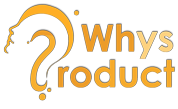“Measure What Matters” is a book written by John Doerr, a venture capitalist and partner at the firm Kleiner Perkins. The book is a guide to using OKRs (Objectives and Key Results) as a framework for setting goals and measuring progress.
The book starts with the story of how Intel’s Andy Grove used OKRs to turn the company around in the 1970s and 1980s. The book then goes on to explain how OKRs can be used to set clear and measurable objectives and track progress towards achieving them. It covers how to set goals at different levels of an organization, from individual to company-wide, and how to use data to measure progress and make adjustments as needed.
The book also covers how to implement OKRs effectively, including how to communicate them to the team, how to align them with company strategy, and how to avoid common pitfalls. It also provides case studies of companies that have successfully implemented OKRs, such as Google, Intuit and Bonobos.
One of the key takeaways from the book is that OKRs help companies to focus on the most important things and make sure they are making progress towards achieving their goals. It is a tool that can be used by any organization, regardless of size or industry, to increase accountability, drive performance, and achieve breakthrough results.
The 10 most important recommandations
- Setting clear and measurable objectives: The book emphasizes the importance of setting clear and measurable objectives using the OKRs framework. This allows product people to align their goals with the overall company strategy and track progress towards achieving them.
- Aligning objectives across the organization: The book stresses the importance of aligning objectives across the organization, from individual to company-wide, to ensure that everyone is working towards the same goals.
- Using data to track progress: The book recommends using data to track progress and make adjustments as needed. This allows product people to see where they are making progress and where they need to focus their efforts.
- Communicating objectives to the team: The book suggests that product people should effectively communicate objectives to the team, to ensure that everyone understands their role and how their work fits into the overall goals of the organization.
- Establishing a culture of accountability: The book emphasizes the importance of establishing a culture of accountability, so that everyone is held responsible for achieving their objectives.
- Focusing on the most important things: The book advises product people to focus on the most important things, rather than trying to achieve too many objectives at once.
- Avoiding common pitfalls: The book highlights common pitfalls that organizations face when implementing OKRs, such as setting unrealistic goals, and provides advice on how to avoid them.
- Setting stretch goals: The book encourages product people to set stretch goals, which can inspire creativity and drive breakthrough results.
- Adapting to changing circumstances: The book stresses the importance of being flexible and adaptable, and adjusting objectives as circumstances change.
- Learning from successes and failures: The book encourages product people to learn from both their successes and failures, and to use that learning to improve in the future.
OKR
According to John Doerr, OKR stands for Objectives and Key Results. It is a framework for setting goals and measuring progress. It is a simple, yet powerful tool that allows organizations to align their objectives with the overall company strategy and track progress towards achieving them. OKRs consist of an objective, which is a specific, measurable and time-bound goal, and key results, which are specific and measurable outcomes that will indicate whether the objective has been achieved. OKRs are used at all levels of an organization, from individual to company-wide, to ensure that everyone is working towards the same goals. They provide a clear focus and sense of direction, increase accountability and drive performance and achieving breakthrough results.
An example of OKR is as follows: Objective: Increase sales revenue by 20% in the next quarter Key Results:
- Achieve a 15% increase in online sales
- Increase the number of sales leads generated by 30%
- Launch 3 new products in the next quarter
- Increase the average order value by 10%
This objective is specific, measurable and time-bound, it targets increasing the sales revenue by 20% in the next quarter. The key results are also specific and measurable, they indicate the ways that the objective will be achieved, such as achieving a 15% increase in online sales, increasing the number of sales leads generated by 30%, launching 3 new products and increasing the average order value by 10%. This OKR would be set for the sales team, but it would be aligned with the overall company strategy and progress towards achieving the OKR would be tracked regularly.
John Doerr
John Doerr is an American venture capitalist, philanthropist and author. He is a partner at the venture capital firm Kleiner Perkins, and has been a significant investor in technology companies such as Google, Amazon, and Twitter. He is known for his expertise in venture capital and his book “Measure What Matters” which focused on the OKR framework (Objectives and Key Results) which he has been promoting for over 20 years and it’s widely used in Silicon Valley startups and large companies alike. He has been a significant philanthropist, having donated millions of dollars to organizations such as the Environmental Defense Fund, New Schools Venture Fund, and the ClimateWorks Foundation. He also is a board member of the nonprofit education company Khan Academy and the human rights organization Amnesty International.

